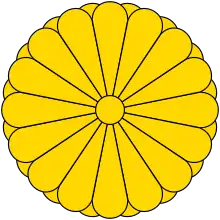1904 Japanese general election
General elections were held in Japan on 1 March 1904.[1] The Rikken Seiyūkai party remained the largest in the House of Representatives, winning 133 of the 379 seats.
| ||||||||||||||||||||||||||||
All 379 seats to the House of Representatives 190 seats were needed for a majority | ||||||||||||||||||||||||||||
|---|---|---|---|---|---|---|---|---|---|---|---|---|---|---|---|---|---|---|---|---|---|---|---|---|---|---|---|---|
| ||||||||||||||||||||||||||||
| ||||||||||||||||||||||||||||
 |
|---|
| This article is part of a series on the politics and government of Japan |
|
|
Electoral system
The 379 members of the House of Representatives were elected in 51 multi-member constituencies based on prefectures and cities. Voting was restricted to men aged over 25 who paid at least 10 yen a year in direct taxation.[2]
Results
| Party | Votes | % | Seats | +/– |
|---|---|---|---|---|
| Rikken Seiyūkai | 217,691 | 33.5 | 133 | –42 |
| Kensei Hontō | 170,319 | 26.2 | 90 | +5 |
| Kōshin Club | 55,709 | 8.6 | 39 | New |
| Jiyu Club | 31,772 | 4.9 | 18 | New |
| Mumei Club | 31,197 | 4.8 | 25 | New |
| Teikokutō | 27,244 | 4.2 | 19 | +2 |
| Others | 116,419 | 17.9 | 55 | 0 |
| Invalid/blank votes | 5,777 | – | – | – |
| Total | 656,128 | 100 | 379 | +3 |
| Registered voters/turnout | 762,445 | 86.1 | – | – |
| Source: Mackie & Rose, Voice Japan | ||||
References
- Thomas T Mackie & Richard Rose (1991) The International Almanac of Electoral History, Macmillan, p281
- Mackie & Rose, p276
This article is issued from Wikipedia. The text is licensed under Creative Commons - Attribution - Sharealike. Additional terms may apply for the media files.

